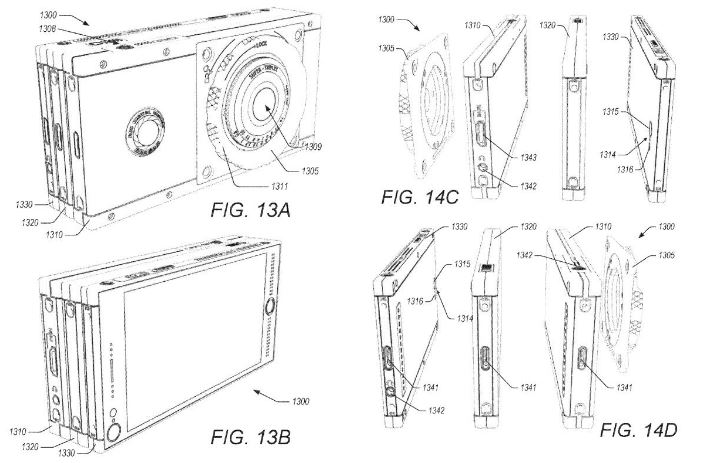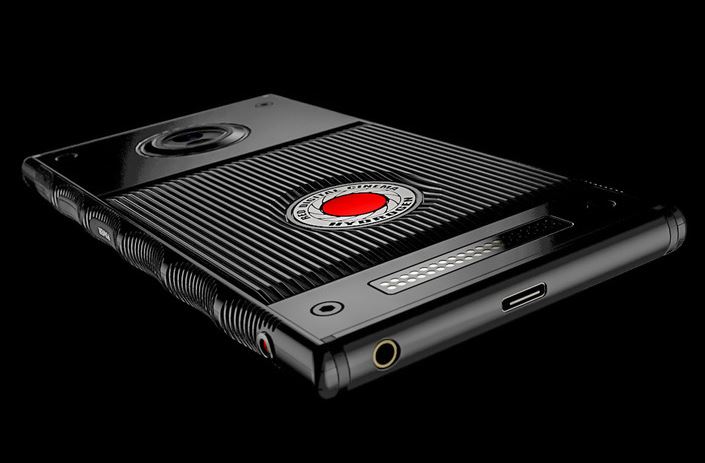RED is taking its knowledge of high-quality cinema cameras to the smartphone industry with a new product, the Hydrogen One. It’s RED’s bet to revolutionize the use of smartphones.
The Hydrogen One offers the basics: A battery, internal storage, an external micro SD card slot, a headphone jack, and a front and back camera. Apart from that, the smartphone features what RED calls a 5,7” “holographic display,” which is multi-view (4-view) as compared to stereo 3D (2-view). The display allows the user to view traditional 2D, holographic 4-view (H4V), and stereo 3D content, and works with 2D/3D VR, AR and MR applications, all supported in both landscape and portrait modes without the need of glasses or headsets.
Holographic Display
“Our display is technology you haven’t seen before,” said RED’s leader Jim Jannard, “It is not lenticular, which is inferior tech in every way, has been tried many times before and failed for good reason. (See Amazon 3D Fire, LG Optimus, etc).”
Here’s how lenticular displays work: The screen displays the same image from two slightly different perspectives, and small lenses direct the light from the images to your eyes such that each eye sees only one image. Your brain puts the images together and you interpret it as a three-dimensional image. However, this kind of technology does present some issues. It dramatically lowers resolution, users may have trouble turning it off for standard 2D content, only works in one direction (usually landscape), and requires the user to stand in a sweet spot to view it. However, RED is confident it has fixed these issues with its “holographic” technology.
Although there isn’t much information about the 3D/holographic capabilities of the phone, there are some companies out there showcasing similar technologies, and these might give you an idea of what to expect. One such company is Leia 3D, founded in 2013 by David Fattal, who developed the core technology back when he worked at HP Labs.
https://www.youtube.com/watch?v=JGR03TzZONA
Immersive Audio
T Hydrogen One also boasts a feature that converts stereo sound into expansive multi-dimensional audio through a proprietary H3O algorithm embedded in the OS. This translates to having 5.1 on your headphones. As RED puts it, it’s “the perfect match for holographic H4V or just listening to your favorite tunes”.
A Modular Phone
Then there’s the modularity. On the back of the Hydrogen One, there’s a small connector (a high-speed data bus) that allows the attachment of add ons, such as camera lenses for shooting higher quality video, still images, and Hydrogen-format holographic images. RED recently released a patent that shows how the modular add ons might work and look like.

The above is an entry in the patent that explains one of the many possible scenarios: “When the phone module 1330, battery module 1320 and camera module 1310 are assembled to form the modular cellular phone 1300, information and power can be transmitted between the modules through a system bus (…) For example, the camera module 1310 can send video data having a resolution of at least 2K and a frame rate of at least 23 fps through the battery module 1320 to the phone module 1330 for display, storage, transmission or the like.”
The Hydrogen One will also work as a user interface and monitor for the Scarlet, EPIC and Weapon cameras. Furthermore, RED will open a channel to store all 4-view holographic content, ready to download or stream – including movies, documentaries, apps and games.
Though RED has yet to show how AR, VR and MR will work with the phone, hopefully the modular system can help uses obtaining a better quality experience with technologies on theirmobile devices.
Price, Availability
With a $1,195 price for the aluminum version, and $1,595 for the titanium one, it doesn’t seem RED is necessarily competing with other leaders in the industry. It’s hard for the average consumer to spend that money on a smartphone, especially considering the industry’s skepticism about the device. Meanwhile, RED founder Jim Jannard is convinced this is the next big thing, and says full-refunds before launch are available, but “be prepared to be surprised on the upside. It only gets better the more information you have.”
The smartphone sets to release in Q1 2018 with a USB-C Cable and charger, an expandable Micro SD Card slot plus a “special small token” for ordering early. Additional modules won’t be available at launch.
“Why do we feel we can make a difference in the cell phone market?” Jim asked. “Because we are doing everything different and (we feel) better.”






